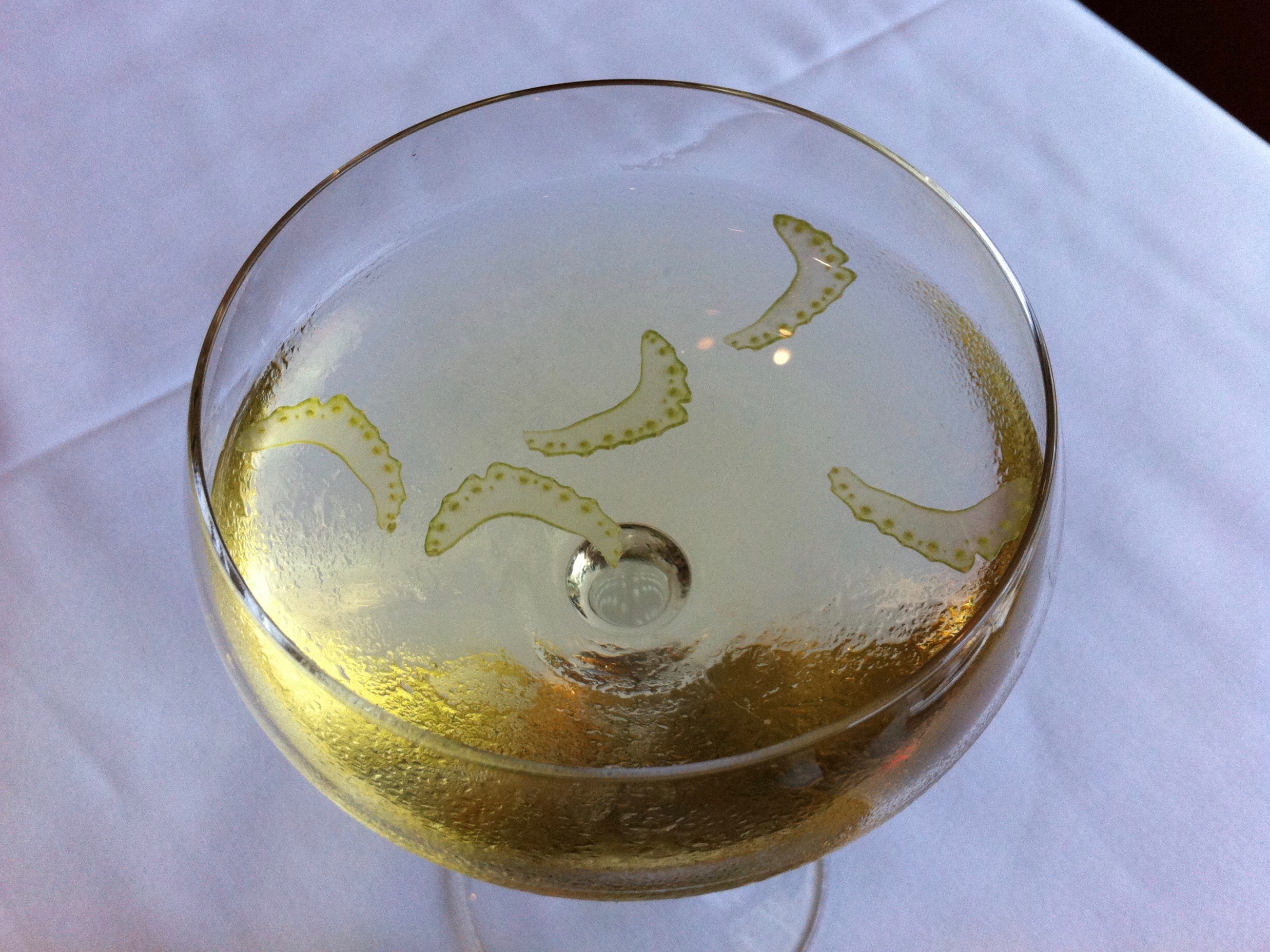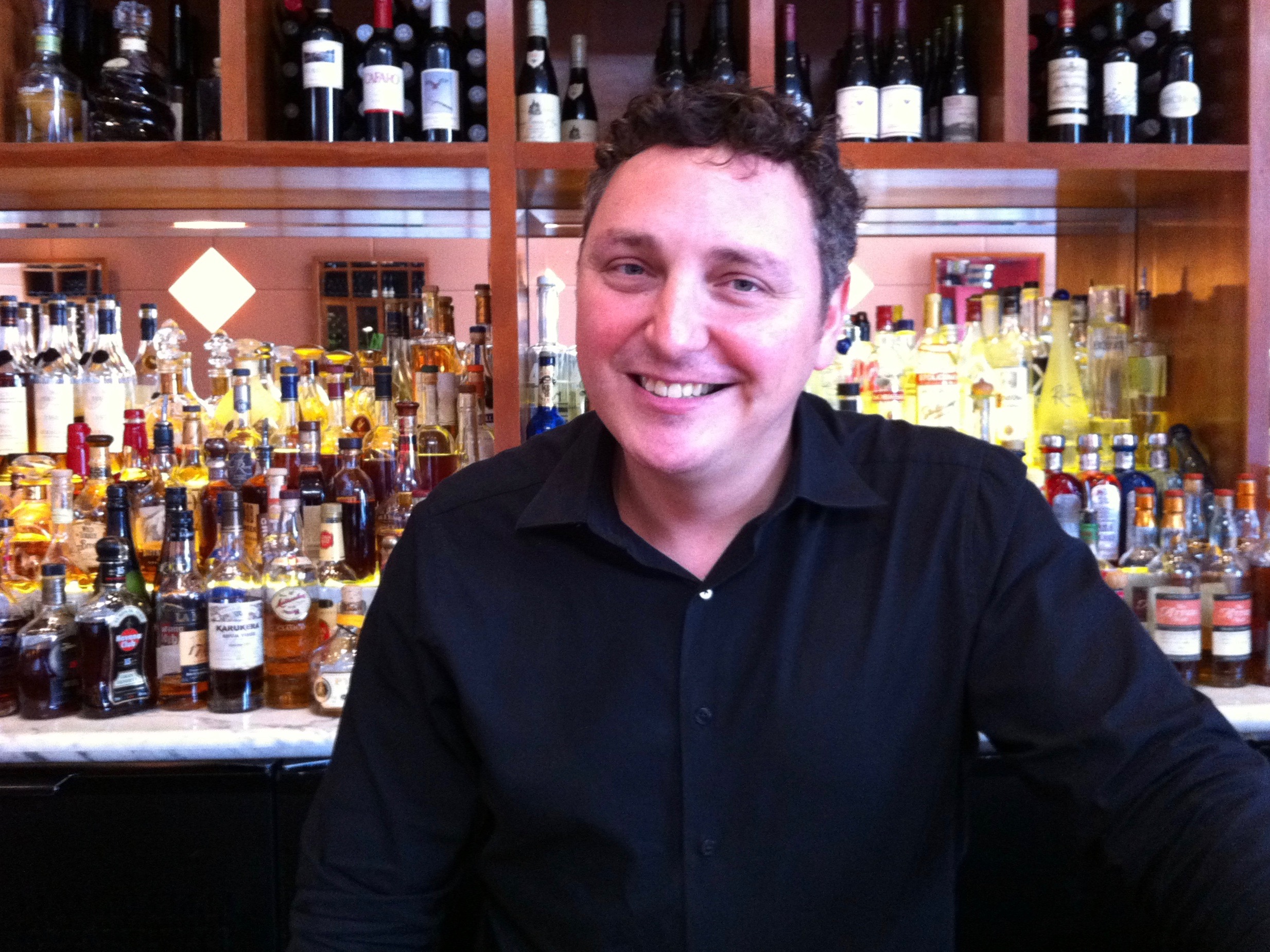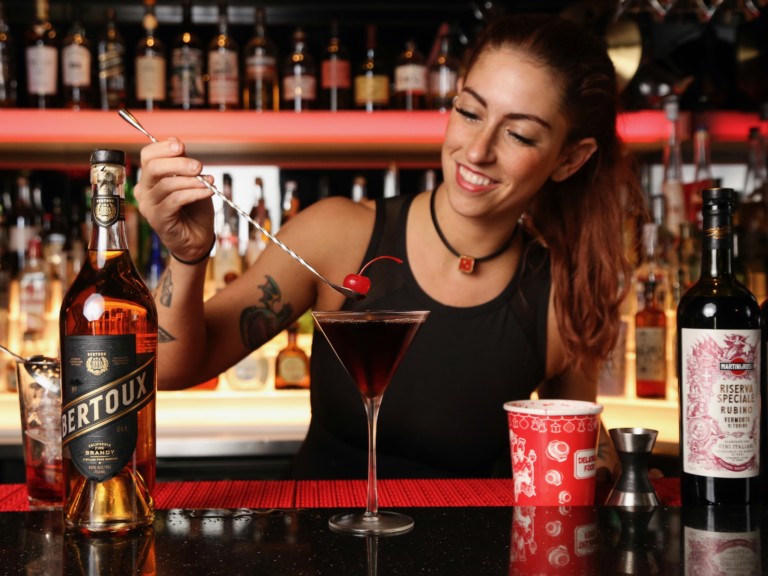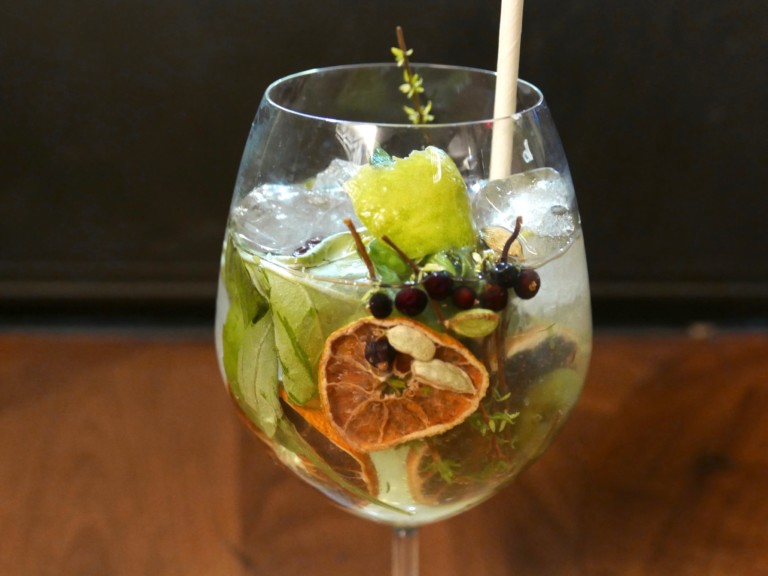INTERVIEW CONTINUED ON PREVIOUS PAGE
What was your very first cocktail memory, good or bad?
Well this was back in the mid ’80s, so most of the cocktail memories from back then were on the bad side of things. As I’m sure you’re probably aware, the cocktails of the ’80s were a little bit different from the cocktail revival that we’ve been experiencing the last few years. Things were generally sweet, ingredients typically were not fresh, instead of using the juice of fresh limes and lemons, we were often using powdered citrus bar mixes. One of the first that I ever made was a Harvey Wallbanger. Things like the Harvey Wallbanger, or a Zombie, or a Slow Comfortable Screw Up Against the Wall, things that were very rarely seen again, but these are drinks that were readily consumed back then in ’85, ’86, ’87, when I was first kind of cutting my teeth on that side of things.
It wasn’t initially the bar that actually drew me. It was wine, because at the time I wasn’t drawn to the balance of the cocktail back then because they seriously lacked balance in their construction. They were either overly sweet, overly boozy – because it was also the decade of indulgence – where it wasn’t necessarily about the quality of what people were drinking, but the quantity. I wasn’t drawn to the cocktail, necessarily, back then, but I was drawn to wine, because the wine I experienced through this little French restaurant was wonderfully balanced and complex. My first pull towards the bar side of things was actually the wine.
Which did you become interested in first? Was it spirits or cocktails?
Spirits long before cocktails, because spirits have such an amazing amount of diversity, even within the same category. When we look at all the gins of the world, there are so many wonderful gins. Of course every single brand representative will tell you theirs is the best, and everyone else is garbage, but it’s really not the case. There’s actually a lot of wonderful diversity. When you look at single-malt Scotch, we’ve got about 120 whiskeys behind the bar. They’re all different. There may be some that are slightly similar, but every single one is different, and if you have them side by side, there are very few people around who will be able to tell the difference between them.
What was the most recent cocktail that you made here, and what was your inspiration?
Nightly there are new creations that are coming about, because we do have a very large regular clientele, and those customers that we’ve built up as a regular, they will often come in and say, “I don’t know what I feel like. Just run with it.” So it gives me an opportunity to freestyle.
At that point, do you know what they like?
Yeah, we generally have a great idea of what they like, what they dislike. There was a young lady who was in yesterday who’s been in many times. She’ll always start with a Manhattan. She prefers it a little bit sweeter, so we’ll make hers a little on the sweet side, cause it’s very important for every bartender – I believe – to make a drink not for themselves, but to make it for the guest. She likes it a little bit sweeter, I make it a little bit sweeter. He likes it a little bit drier, I make it a little bit drier. It’s a very important conversation that needs to happen between the guests and the bartender, if the opportunity arises for that conversation to happen. She decided to have a little ricotta ravioli, that we have on the menu. She asked for a cocktail pairing that would go along with it. Because of the other components in the dish, I started with some Calvados, added a little bit of saffron gin, a touch of lemon, and a little bit of jasmine green tea syrup, just to tie those components together, and the sweetness would balance the acidity of the lemon. Then to top it off, a little bit of cardamom bitters, and the cardamom bitters tied it together. So the safffon and the cardamom, the apple from the Calvados and a little bit of lemon went directly towards complementing that dish. It’s quite a usual question for people to say, “Well, what’s this called? What do you call this one?” They generally don’t have names.
Did you name that for her?
We hadn’t yet come up with the name by the time she departed. Even earlier that evening, someone came in and said they wanted something that was floral, maybe a little bit fruity, but not sweet, and something perhaps bubbly. So that one was a little bit easier to name, simply called the Bouquet. We started with a floral gin, Hendrick’s, added in some housemade elderflower liqueur, a little jasmine green tea syrup, the same syrup that I had used in the other person’s cocktail, a little bit of crème de violette was sprayed inside the champagne flute. We soaked a sugar cube in lavender bitters and dropped that to the bottom of the glass. It was a wonderful balance of floral and a slight bit of tartness because of the citric acid that I added to top off the glass, and in that case it was very easy. Naming cocktails is something that I’ve never really been fond of.
Would you say that you have any mentors?
There are a few, and all for different reasons. Speaking style, I would have to say it would be Philip Duff. He won me over last year at Tales of the Cocktail when I saw him do a presentation on How to do a Presentation. I was professionally enamored with that introduction.
When it comes to a mastery of technique, Kazuo Ueda. Ueda-san, as he is commonly called, who is the master of Japanese bartending. Whether people agree with everything that any bartender does is completely irrelevant – because I’ve heard some people say, “Yeah, but you don’t necessarily need to do this, need to do that.” It’s not about agreeing, it’s about the level of respect for the craft. I give absolute, unconditional respect for a man like Kazuo Ueda, because he’s truly a craftsman.
Where and what do you like to drink when you’re not at West?
It depends on the time of day. It depends if I’ve just got off work, or have the entire day off. It might perhaps have something to do with the time of year, or if I’m in Vancouver or not in Vancouver. But in general, I’ll give you a couple quick answers for that. If I’m just getting off work, I’d either like to have a well-crafted classic cocktail, not somebody’s twist or take on it, but a well-crafted replication of a classic cocktail. Or bourbon and a beer. The classic bartender’s after work flavor profile. Most bartenders, when you ask them, it’s true, we all love a good whiskey, whether it be bourbon, Scotch, what have you. Bourbon goes so nice with beer, and beer is so refreshing, quenching and after an entire evening of tasting every creation, replication that we’ve done, the saturation of flavor, you don’t want to think about flavor anymore.
So where do you like to enjoy your classic cocktails, bourbon and beer?
Well, the bourbon and beer I can have here. Bourbon I can have at home, or there’s a variety of haunts that stock a good selection of bourbon, a nice selection of beers, whether they be craft beers or imported beers. My mood changes when it comes to classic cocktails. There are about 10 – 12 bars in Vancouver that I love to frequent, because I love their replication of these classic cocktails. I love a good Manhattan. One of the reasons that I love a good Manhattan is because it’s one of those drinks where you either get a good one or you get a bad one. There’s not a lot of in between.
If you could only drink one more cocktail, would it be a Manhattan?
It likely would be. It would likely be a Thomas Handy, Carpano Manhattan. Thomas Handy is a rye whiskey, and I’m a big fan of the pre Prohibition style of Manhattan where rye whiskey was dominant. It wasn’t until after Prohibition that bourbon started to become more popular, and bourbon started to rise in popularity with all of those previously rye based cocktails. I love the nice spicy American rye. There are many. I’m a big fan of the Thomas Handy. It’s a full cask strength. The bottle that I currently have behind the bar is 63.75%, which relates to 127.5 proof. It requires a little extra stirring, a little extra dilution, to bring it down to a leisurely palatable level. I don’t like switching up the bitters. I like using the classic Angostura bitters, or maybe another classic, Boker’s bitters or something along those lines.
Who would make the Manhattan for you, if it couldn’t be you?
A couple of names around town, I would readily go to Colin Turner, I would go to David Stanton, David Bain, Jay Jones, Josh Pape, Shaun Layton, I could go on and on and on. These peers of mine in the bar industry in this city, they’re very good at replication. They’re also good at creation. Like I’m saying earlier, if I had my druthers, I generally would lean towards a good replication, rather than somebody’s new creation.
What’s a cocktail that you suggest people make at home?
It depends on the time of year.
Summer.
For summer, if it was the surrounding Vancouver area, today, I’d say go pick up today’s Vancouver Sun, weekend edition, in it I put a Recipe on a Pitcher of Mai Tai. It’s been widely known in the cocktail circle that Don the Beachcomber was the first to come up with the mai tai recipe, later which, Trader Vic kind of stole the idea from him because they were thieves of each other’s ideas. Trader Vic was the primary person who popularized the cocktail. But it was also something that was – forgive the term – but bastardized over time because of its evolution from its conception to today’s time. If you go to Hawaii, where the drink did not originate by adding guava, pineapple, orange, all sorts of juices that never had any existence in the drink in its initial conception. It was rum, lime juice, Cointreau, orgeat – which is an almond syrup – that has a little bit of orange flower water, it has a little bit of rosewater in it. It could be Cointreau, or it could be Curacao. Either way.

During my lunch at West, David Wolowidnyk paired my Lake Lois steelhead trout with a cocktail involving house-made elderflower liqueur, yellow chartreuse, sauvignon blanc, citric acid, sugar and celery bitters, garnished with transparent shaved celery. “As usual, I look at the dish and sculpt something to match it,” he said.









Leave a Comment